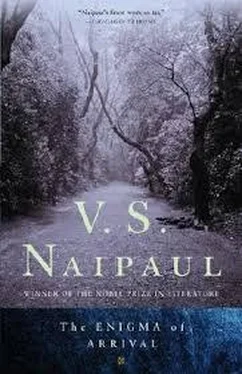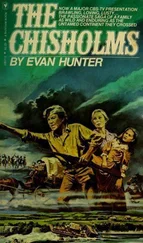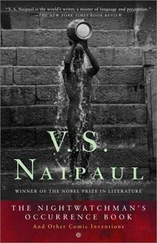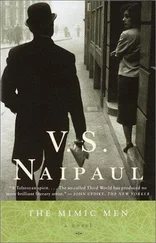V. Naipaul - The Enigma of Arrival
Здесь есть возможность читать онлайн «V. Naipaul - The Enigma of Arrival» весь текст электронной книги совершенно бесплатно (целиком полную версию без сокращений). В некоторых случаях можно слушать аудио, скачать через торрент в формате fb2 и присутствует краткое содержание. Год выпуска: 2012, Издательство: Picador, Жанр: Современная проза, на английском языке. Описание произведения, (предисловие) а так же отзывы посетителей доступны на портале библиотеки ЛибКат.
- Название:The Enigma of Arrival
- Автор:
- Издательство:Picador
- Жанр:
- Год:2012
- ISBN:нет данных
- Рейтинг книги:3 / 5. Голосов: 1
-
Избранное:Добавить в избранное
- Отзывы:
-
Ваша оценка:
- 60
- 1
- 2
- 3
- 4
- 5
The Enigma of Arrival: краткое содержание, описание и аннотация
Предлагаем к чтению аннотацию, описание, краткое содержание или предисловие (зависит от того, что написал сам автор книги «The Enigma of Arrival»). Если вы не нашли необходимую информацию о книге — напишите в комментариях, мы постараемся отыскать её.
The Enigma of Arrival — читать онлайн бесплатно полную книгу (весь текст) целиком
Ниже представлен текст книги, разбитый по страницам. Система сохранения места последней прочитанной страницы, позволяет с удобством читать онлайн бесплатно книгу «The Enigma of Arrival», без необходимости каждый раз заново искать на чём Вы остановились. Поставьте закладку, и сможете в любой момент перейти на страницу, на которой закончили чтение.
Интервал:
Закладка:
There were no more roses. In the next summer there was only brier, a rampant, flowerless thicket. Brier swallowed the evidence of Mrs. Phillips’s pruning; and she never mentioned it again, did nothing further in the manor gardens while Pitton was there. (And perhaps when the cycle of the manor has truly ended, when everybody who knew the place then has disappeared, and new people with new plans walk about the grounds, that wild brier patch will be noted as proof of what can happen to untended, unpruned roses.)
Where, as a new arrival, accepting everything, I had seen people exemplifying their roles, soon it was the ambiguity of the Phillipses that made an impression, caught in my mind. They were people of the outer world acting out their role as house servants. And the ambiguity was real. Mr. Phillips had been a male nurse in a mental hospital; then he had worked in a hotel. In one of those places — a hospital or a hotel — Mrs. Phillips had begun to suffer from her nerves; and it was because of those nerves that they had come to the manor, to be a little withdrawn, to look after my landlord.
So far from being a servant, Mr. Phillips had been in the business of restraining and disciplining people. And as often happens, people attracting people they need, Mr. Phillips, the strong man, attracted people — like his wife, with her nerves — whom he had to look after. And perhaps there was an extra happiness of this sort as well in his job in the house, with his employer. Which would have explained his oddly happy, fulfilled look that day when I saw him driving his employer below the beeches on the ledge above the river.
He was a man of medium height; perhaps even a small man. The cold-weather clothes he wore — a heavy zip-up pullover, for the most part — concealed his physique. It was only in my second summer — perhaps because of what I had been told about him, and what he had told me about himself — I noticed his well-developed back, his great shoulders and powerful forearms, as of a man used to lifting weights.
Every afternoon at about three I heard him shout from somewhere beyond the vegetable garden. After some time I knew what he was shouting. He was shouting: “Fred!” It was his call to Pitton to tea. Whether this was a gesture of friendship; whether it was something he was required to do; whether they all had tea together in the Phillipses’ sitting room or in the kitchen, or whether Pitton just went and took away his tea, I don’t know. There was an irritation and authority in that shout that made me think of the other “Manor” (as it was known locally) where Mr. Phillips — and Mrs. Phillips as well, before her nerves — had worked.
O NCE THERE were sixteen gardeners. Now there was only Pitton. It was some time, a fortnight perhaps, before I got to know him, got to know that he wasn’t just a visitor to the grounds; and it was some time again before I understood that he was the gardener, the last of the legendary sixteen. He didn’t quite fit the role. There was nothing antique or forlorn or elegiac about Pitton’s appearance. He was in his mid-fifties, middle-aged rather than old; he certainly wasn’t one of the original sixteen. He was a sturdy man, with a firm paunch, and of the utmost respectability in his dress. He wore — it was winter when I first saw him — a felt hat, a three-piece tweed suit, and a tie. (Always a tie on Pitton, winter and summer.)
Not only did he not look like one of the sixteen, he didn’t even look like a gardener. At least, he wasn’t my idea of a gardener. And that is a better way of putting it, because this business of gardens and gardeners called up special Trinidad pictures and memories, called up the history of my own small Asiatic-Indian community, late-nineteenth-century peasant emigrants, and touched a nerve.
As a child in Trinidad I knew or saw few gardeners. In the country areas, where the Indian people mainly lived, there were nothing like gardens. Sugarcane covered the land. Sugarcane, the old slave crop, was what the people still grew and lived by; it explained the presence, on that island, after the abolition of slavery, of an imported Asiatic peasantry. Sugarcane explained the poor Indian-style houses and roughly thatched huts beside the narrow asphalt roads. In the smooth dirt yards of those little houses and huts there were nothing like gardens. There might be hedges, mainly of hibiscus, lining the foul-water ditches. There might be flower areas — periwinkle, ixora, zinnia, marigold, lady’s slipper, with an occasional flowering small tree like the one we called the Queen of Flowers. There was seldom more.
There were gardens in Port of Spain, but only in the richer areas, where the building plots were bigger. It was in those gardens that as a child, on my way home from school in the afternoons, I might see a barefoot gardener. And he would be less a gardener, really, less a man with knowledge about soils and plants and fertilizers than a man who was, more simply, a worker in a garden, a weeder and a waterer, a barefoot man, trousers rolled up to mid-shin, playing a hose on a flower bed.
This barefoot gardener would be Indian — Indians were thought to have a special way with plants and the land. And this man might have been born in India and brought out to Trinidad on a five-year indenture, with a promise of a free passage back to India at the end of that time or a grant of land in Trinidad. This kind of Indian contract labor had ended only in 1917—antiquity to me in 1940, say; but to the barefoot waterer in the garden (still perhaps knowing only a language of India) a time within easy recall. This kind of gardening was a town occupation, barely above, perhaps even merging into, that of “yard boy,” which was an occupation for black people, and something so unskilled and debased that the very words were used as a form of abuse.
After the war a new kind of agriculture began to develop. Port of Spain had grown, and the lands of the Aranguez Estate, not far from Port of Spain, were taken out of sugarcane cultivation (Aranguez, named in the late eighteenth century by the Spaniards after the town of Aranjuez in Spain, with the famous royal gardens). There was a certain amount of house building at Aranguez; but to the south, on the edge of what was swampland, liable to flooding from the Gulf of Paria when the Orinoco River in Venezuela rose, on this land, on either side of the highway embankment the Americans had built during the war, former estate workers had leased plots from the estate, a few acres each, and had begun to develop vegetable gardens, slowly redeeming the land from swamp, building it up.
The vegetables they grew — aubergines, beans, okras — had a shorter cycle than sugarcane and they were correspondingly more demanding. They required finer attentions; and every day during a vegetable cycle the vegetable growers could be seen weeding or digging or watering or spraying, even when there was horse racing or an international cricket match in Port of Spain or some big festive event, working the way men work only when they work for themselves.
Cocoa created the effect of a forest or wood; sugarcane was a tall grass. The straight lines of these vegetable plots, the human scale, the many different shades and textures of green, gave us a new idea of agriculture and almost a new idea of landscape and natural beauty. The vegetable growers were Indian, but these vegetable plots were like nothing in peasant India. The skills, the practices, came from the experimental plots of the Imperial College of Tropical Agriculture — famous throughout the British Empire — which was just a mile or two away. Many of the Indian vegetable growers had worked there as garden laborers. And it was only some years after I had been in England that I saw that the landscape the Indian vegetable growers had created on either side of the highway in south Aranguez — a landscape which had no pattern in Trinidad or India — was like the allotments I saw in England, at the edge of towns, from the railway train. English allotments in a tropical and colonial setting! Created by accident, and not by design; created at the end of the period of empire, out of the decay of the old sugar plantations.
Читать дальшеИнтервал:
Закладка:
Похожие книги на «The Enigma of Arrival»
Представляем Вашему вниманию похожие книги на «The Enigma of Arrival» списком для выбора. Мы отобрали схожую по названию и смыслу литературу в надежде предоставить читателям больше вариантов отыскать новые, интересные, ещё непрочитанные произведения.
Обсуждение, отзывы о книге «The Enigma of Arrival» и просто собственные мнения читателей. Оставьте ваши комментарии, напишите, что Вы думаете о произведении, его смысле или главных героях. Укажите что конкретно понравилось, а что нет, и почему Вы так считаете.












